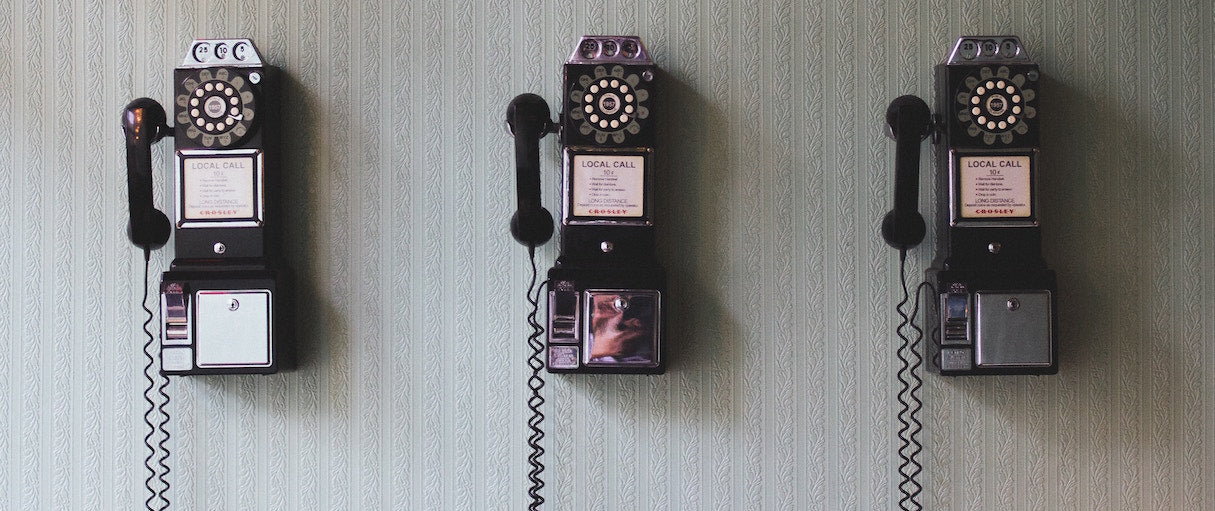A couple of weeks agowe looked at client onboarding, the process for welcoming new clients into your business. However, it doesn’t just stop there.It’s important to continue to build strong relationships with your clients throughout your projects.
In the last few years, a lot of people have talked more about ‘collaborative discovery’ rather than ‘client education’ or ‘client onboarding’, and some agencies have established a new way of working side-by-side with their clients.
In this article, we’ll discuss alternative approaches to client relationships that will help you transform them into long-lasting partnerships.
1. Collaborative discovery

One way of including the client more is toblur the lines between agency and client, and collaborate with them as much as possible, right from the start.
“We treat our clients as partners — we don’t like being called vendors because we see it as a truly collaborative partnership where we are both mutually invested,” explains Nikki Shum-Harden, SVP of client partnerships, atRED Interactive Agency.
“We begin by deeply immersing ourselves in the brand, culture, category, and audience, and then invite the client to an immersion workshop. We spend one to two days heads down in a room where it’s our team and the brand’s stakeholders, and we really start to surface all of the critical information we need to know to get started on the right foot. We find that it’s also a great way for them to see what it’s like to work with us, and a very efficient way to get everybody on the same page.”
Trent Walton创始人、三分之一的网页设计商店Paravel, takes it even further.
“We typically ‘bolt on’ to a team of engineers, leadership, and sometimes other designers and front end devs already in place, so there’s a lot of collaborative discovery. It’s always our goal to make our involvement as seamless as possible, so the entire team can focus on the quality of the work.”
Haraldur Thorleifsson, founder and design director ofUeno, favors a similar approach
“We want our clients to see us as an extension of their team, not as an outside partner,” he explains.
To achieve this, the Ueno team tries as possible to work in the same physical locations, communicate daily, and use the same communication tools as their clients do.
“We also make sure we do non-work things together, we get to know them as individuals, building trust and friendship along the way,” Haraldur adds.
Evgenia Grinblo用户体验,ad atFuture Workshops, has found that the best way to turn a client relationship into a partnership, is to include clients in those moments of discovery, when the solution isn’t clear just yet.
“Let them ask questions, ponder the different solutions, sketch, try things out, and iterate,” she suggests. “The traditional pitch process — you go away and design things to unveil — doesn't work well for this because your process is opaque to your clients. I'm a big believer in learning by doing, and nothing has worked better for client bonding than getting into a room full of whiteboards and post-its together.”
Evgenia adds that another useful tool is to practice documenting assumptions and product questions.
Let them ask questions, ponder the different solutions, sketch, try things out, and iterate.
“The ability to make an assumption and set it aside, without letting it block you from creativity, allows clients to practice being comfortable with the unknown, which is what design is all about.”
Jaimee Newberry, co-founder and CEO ofPicture This Clothing, however, stresses that a truly collaborative team mindset is established both by actions and the most seemingly innocent choice of words.
“我需要一个强势的姿态,我的团队从未educate’ our clients,” she argues. “While I understand the common use and intent behind the word, the subtle psychological implication of the word ‘educate’ over a word like ‘collaborate’ sets the tone of superior positioning. As if we think we are the teachers and they are the students. Our clients are intelligent adults, we share our knowledge with them, they share theirs with us. Our respective knowledge is an exchange. Their strengths are not in our business, nor ours in their business, but one of the most damaging precursors to any client relationship is the assumption that we must ‘educate’ them.”
的subtle psychological implication of the word ‘educate’ over a word like ‘collaborate’ sets the tone of superior positioning. As if we think we are the teachers and they are the students.
Jonathan Khan, who organizes events that teach communication techniques, agrees.
“To me, the idea that an agency would need to ‘onboard’ or ‘educate’ a client comes off as patronizing, as if we need to induct them into the ways of the world. Isn't client engagement about working together to create something that works for everyone? If so, agency people need as much ‘onboarding’ or ‘education’ in the ways of the client.”
In fact,Bryce Bladon, a communications and branding consultant, as well as editor-in-chief ofClients from Hell, points out that education goes both ways.
“Not only should you be educating your client, you should strive to understand the issue that led to them seeking you out, the results they desire, and how they expect to meet them,” he recommends. “This gives you an opportunity to communicate how your work will help them achieve those desired results.”
“Don’t try to explain the fine minutiae of your craft. Instead, educate your client by showing how choices you make can help them achieve results that matter to them.”
Trent Walton agrees, and adds that education is a two-way street.
“We always have our work cut out for us in learning about the processes and goals of the client. Through that work, we begin to share ideas and philosophies as our perception more closely aligns with theirs. I think it’s vitally important to be clear and honest with the team, but comments will more likely have an impact when context, understanding, and trust are shared.”
Also check outHow to enchant your clients at every turnby Amy Kapell, VP of client strategy at California digital agencyClosed Loop.
You might also like:How to Build Strong Relationships with Clients in Another Time Zone.
2. Building trust

Trust, of course, is the foundation of a great client/agency relationship.At the beginning, that trust must be earned on both sides, and that’s similar to the beginning stages of any relationship with a new person, Evgenia Grinblo explains.
“You must overcome gaps in terminology, expectations, and different past experiences,” she warns. “Clients may not be used to your process or understand its benefits, and you may feel like their questions about your way of working aim to criticize rather than learn. In the beginning, there's a mix of excitement for a new partnership mixed with an equal amount of lack of trust.”
You must overcome gaps in terminology, expectations, and different past experiences.
Shopify Plus ExpertsSwankyAppleinclude a note in their proposal, which states that “we try to foster an honest and frank comradery in projects.”
“We want clients to feel absolutely safe in challenging us, asking questions, and requesting our input,” clarifies director Dan McIvor. “But at the same time, we want to be free to express when we think clients are missing an opportunity. You need trust for this to work well, and the process of building trust usually starts off with discussing little things and then moving on to larger opportunities.”
Another way to build trust is to align expectations, which is also crucial for a good business relationship.
“A client usually hires you because you have experience or expertise that they lack,” explains Bryce Bladon. “Typically, they may not understand what, exactly, they need from you or how it can help them. They may have been burned by a freelancer in your field before, and as a result, they’re suspicious of anyone practicing your craft — a bias that’s rooted in both ignorance (of your craft) and experience.”
Bryce adds that by taking the time to work out a client’s issue and the results that matter to them, you can align expectations.
“Likewise, if you’re taking the time to educate your clients on how your work addresses issues and achieves meaningful results, their expectations are appropriately framed by what’s possible,” he says. “People can be cagey about their ignorance, their budget, and their needs. Taking the time to understand and address these issues not only aligns expectations, it builds trust.”
You might also like:4 Quick Ways to Build Trust With a New Client.
3. Communication

One of the main challenges of a successful relationship with a client is communication.You need to get to a mutual understanding of what it is you are actually making. That, as Haraldur Thorleifsson points out, is the first step in a successful project, but also sometimes one of the hardest.
Jaimee Newberry recommends to always listen first.
“Then ask the right questions up front to learn where your customer is at, and what problems they’re trying to solve,” she suggests. “Most of the time we think we’re communicating fine, but most of the time we need to communicate ten times more than we are. Breakdown occurs when clarity of vision is lost. Nine out of 10 times, any frustrations on either side occur becausewe不与客户沟通不够。”
Nine out of 10 times, any frustrations on either side occur becausewe不与客户沟通不够。
Newberry adds that if you communicate openly and discuss things up front, the client will understand that projects will almost always require change from a concrete plan. They’ll also realize that it’s okay to disagree with each other, as long as you can have a healthy dialogue and come out with an understanding.
User experience designer and strategistGail Swansonagrees. Good communication starts right at the beginning of any project.
“People should do themselves a favor and prep for kickoffs by designing questions rather than creating a deep post-sales approach deck,” she explains. “Make the most of that moment by starting a conversation that produces shared understanding.”
4. Customer lifetime value

Whether you’re a freelancer or run a studio, it’s also important to focus on customer lifetime value.
“Your first project with a new client is the beginning of a new relationship, and thinking about that relationship as a long-term opportunity will serve you well,” recommends writer, designer, and speakerChristopher Murphy. “Rather than constantly focusing on finding new clients, focus on looking after the clients you have.”
Rather than constantly focusing on finding new clients, focus on looking after the clients you have.
的majority of Christopher’s work comes from a small number of clients, broadly following thePareto Principle.
“Eighty percent of my income comes from 20 percent of my clients,” he explains. “I focus on ensuring the 20 percent are nurtured and looked after, and that has led — over the course of my 25-year career — to lots of happy clients and a steady income stream.”
So, as it transpires, the best way to turn a client relationship into a long-lasting partnership is to break down walls and start seeing the client as exactly that: a mutual partner.
Try to find a shared understanding by discovering your common goals. What are you trying to achieve? How will you know when you’ve achieved it? What would each of you like to contribute?
You might also like:Infographic: How To Build Long-Term Client Relationships.
Change the way you build client relationships
的benefits of changing the way you view your clients and your relationship with them are massive.Jonathan Khan, founder ofTogether London, and organizer of#dareconfandagile content conf, points out that it’s time to stop arguing.
“We can’t force people to see our perspective. But wedohave a choice. It’s not compromise. We’re not giving up our values, we’re putting them into practice by finding solutions that work for everyone.”
What do you do to work closely with your clients?Tell us in the comments section below!
